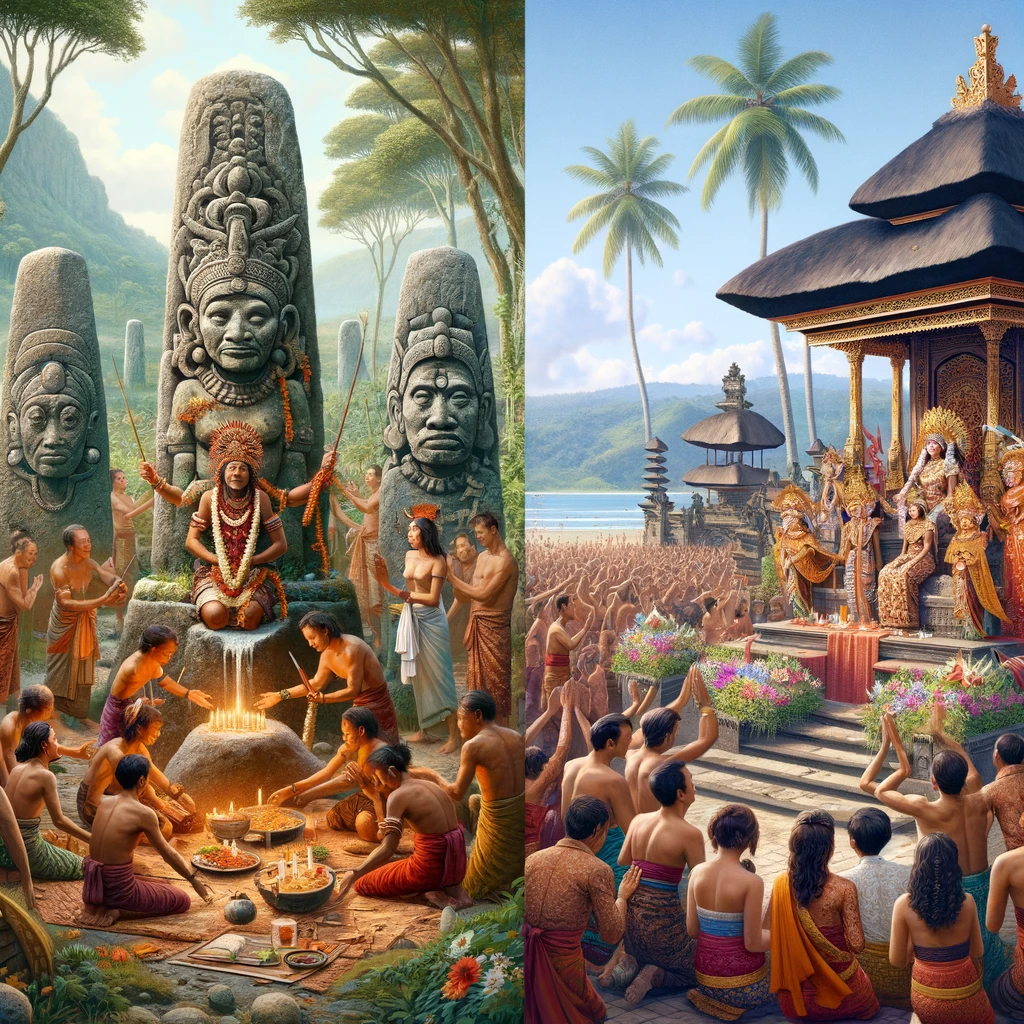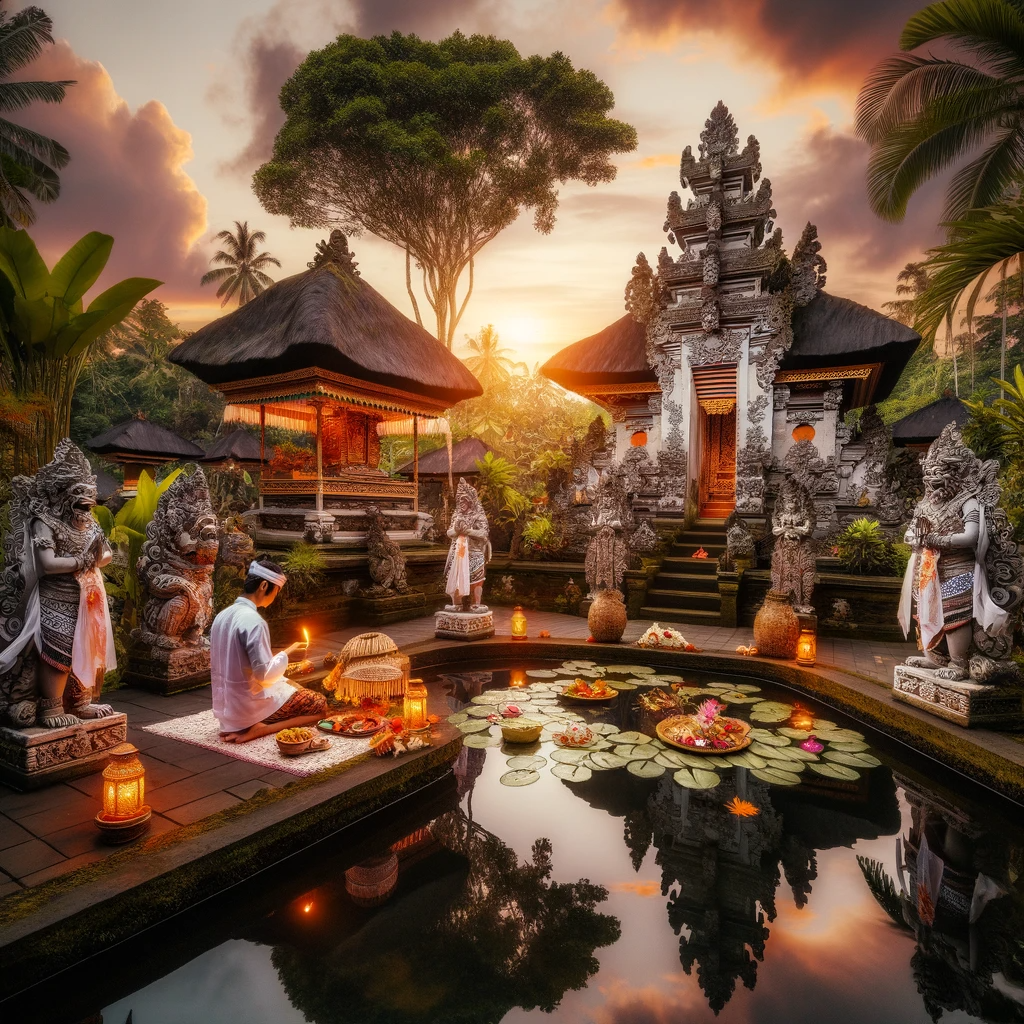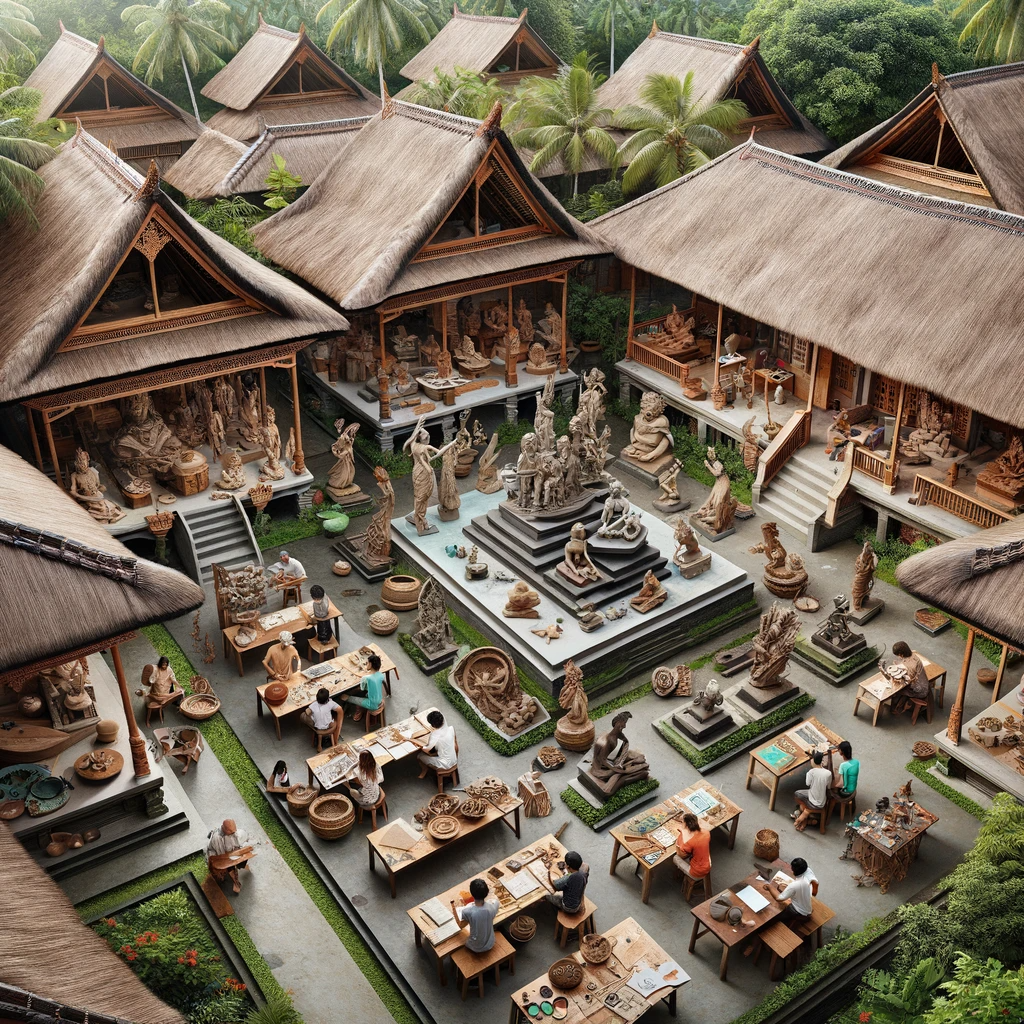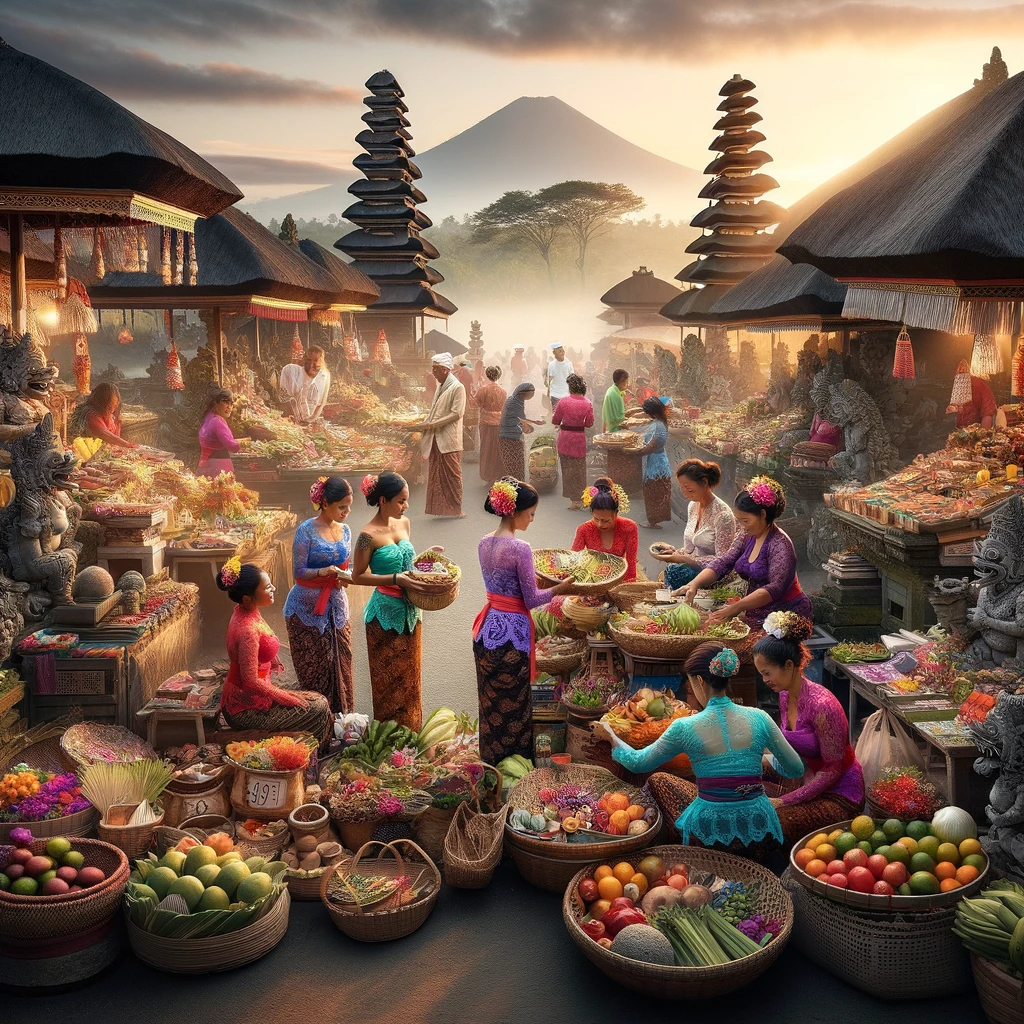CULTURE OF THE BALI
Bali is known as the “Island of the Gods” due to its unique culture deeply rooted in Hinduism. The majority of Balinese practice Agama Hindu Dharma, blending Hindu rituals with local animist beliefs.
Key aspects include a strong emphasis on living harmoniously with nature through rituals, elaborate ceremonies marking milestones, vibrant arts linked to spirituality, open-air architecture based on beliefs, and family compounds with shrines honoring deities. Daily life revolves around maintaining spiritual balance.
Origins and Influences
The culture of Bali was shaped by the migration of people, mainly from Java, in the first century CE, bringing Hindu and Buddhist influences. Over centuries, these blended with local animist beliefs to create the unique form of Hinduism practiced in Bali today.
Prehistoric Bali
Archaeological evidence shows Bali was inhabited as early as 2000 BCE by Austronesian peoples. Megalithic structures like the Menhir stones found in Cekik point to an early complex society engaged in ancestor worship.
Arrival of Hinduism & Buddhism
Indian traders introduced Hinduism and Buddhism to Bali around the 1st century CE. Sanskrit inscriptions from the 9th century show these religions were firmly established on the island by then. Concepts like reincarnation and the caste system became embedded in Balinese culture.
Java’s Influence
Java’s Hindu-Buddhist kingdoms like the Mataram and Majapahit empires conquered Bali intermittently from the 11th to 15th centuries, allowing Hinduism and Javanese culture to thrive. Refugees fleeing Java after the fall of the Majapahit empire reinforced Bali’s Hindu culture.
Dutch Colonial Era
Dutch colonial rule from the 19th century left Bali’s Hindu culture and customs relatively intact while suppressing it in other parts of Indonesia. Balinese aristocracy cooperated with the Dutch, retaining significant autonomy and strengthening Bali’s unique brand of Hinduism.


Religion and Spirituality
Balinese Hinduism, known as Agama Hindu, is deeply intertwined with spirituality and indigenous animist beliefs.
Overview
It emphasizes living harmoniously with nature through rituals, worshipping at elaborate temples and shrines, and marking milestones with festivals. Mystics act as spiritual guides. Vibrant arts and architecture are linked to spirituality.
Core Beliefs
Balinese Hindus believe in one supreme god Sang Hyang Widhi Wasa as well as Brahma, Vishnu and Shiva. The concept of rwa bhineda refers to the balance of opposites through rituals. Tri Hita Karana guides daily life through harmony with god, community and nature. Karma phala means one’s actions determine fate.
Rituals and Ceremonies
Daily offerings are made to deities, spirits and ancestors. Major festivals include Nyepi, Galungan, Kuningan and temple anniversaries. Life rituals mark milestones while healers perform trance rituals.
Temples and Sacred Sites
Pura are Balinese Hindu temples linked to villages, clans, mountains and more. Pura Besakih is the most important. Sacred sites include mountains, lakes, rivers and springs. Temple locations and orientations are based on spiritual forces.
In essence, Balinese Hinduism nurtures connection to nature, community, and gods through daily rituals and offerings.
Arts and Architecture
Arts
Music
Gamelan orchestras use metallic percussion like gongs, xylophones, and drums. Common instruments are gangsa, kendang, gong, suling, and rebab. Vocal styles include kecak, meong, and arja. Music accompanies rituals, dance, theater and entertainment.
Dance
Sacred dances include Sanghyang, Baris, and Legong Keraton. Story dances like Barong, Legong, and Gambuh depict epics. Trance dances are Sanghyang and Barong. Intricate hand movements symbolize spiritual ideas.
Theater
Wayang kulit shadow plays show folk tales and Hindu epics. Wayang wong features dance dramas of epic poems. Arja combines music, dance and singing. Topeng are masked dance dramas on religious themes.
Visual Arts
Painting in the Kamasan style uses narrative themes and natural pigments. Sculpture focuses on ornate stone and woodcarvings with symbolic meaning. Textiles involve weaving, ikat dyeing and batik patterns. Crafts include masks, puppets, jewelry and baskets.
Architecture
Philosophy
Balinese architecture focuses on living harmoniously with nature. Temples are oriented symbolically towards mountains, sea and rivers. Enclosures create balance between inside and outside.
Temples
Pura temple compounds contain shrines, towers and open pavilions. Elaborate gates separate courtyards. Carved decorations depict gods, demons and animals. Pagoda-like thatched meru towers rise overhead.
Palaces
Walled puri palaces have separate pavilions for functions. Bale pavilions have columns and thatched roofs. Carved doors, pillars and panels decorate palaces along with ornate kulkul drum towers.
Houses
Family compounds are walled with shrines and living pavilions called bale. Gardens feature water elements and mini-shrines. Daily offerings are made around the home.


Customs and Lifestyle
Balinese culture emphasizes maintaining harmony through adhering to traditions, rituals, and offerings.
Overview
Daily life focuses on spiritual balance and communal living in family compounds. Milestones are marked with elaborate rituals. Traditional arts and healers are integral. Cuisine features rice, vegetables, chicken and seafood.
Religion and Spirituality
Daily offerings, festivals and ceremonies maintain connections to gods and nature. Tooth filing, cremations and weddings involve extensive rituals. Mystics provide spiritual guidance.
Arts and Architecture
Music, dance, puppets, ornate temples and artwork embed mythology and folklore, with spiritual significance. Architecture integrates nature and beliefs.
Customs and Etiquette
Customs like smiling, palm greeting and modest dress show respect. Sitting positions signify politeness. Women have temple restrictions during menstruation. Life milestones involve customary rituals and attire.
